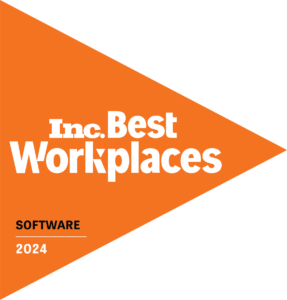Change is sweeping the business climate, affecting how most companies source, create and deliver services, and how they engage with stakeholders. But IT Service Management (ITSM), which underpins nearly every aspect of organizations, is under more pressure. How ITSM professionals deliver value depends on the technology they introduce and manage, and also the dynamic of innovation they bring to the table.
“Technical skills’ shelf life is shortening,” said Gartner Research Vice President Jeffrey Hewitt at Gartner’s IT Infrastructure, Operations & Cloud Strategies Conference. “As the I&O function is asked to provide more business justification for what they do, organizations are looking for I&O new hires to have business backgrounds rather than strictly technical degrees.”
To do it all well, hard and soft skills are required. It’s the combination that can be challenging for a discipline based largely on left-brained thinking. But it’s not impossible. There is plenty of advice to go around, and it starts with an understanding of hard skills and the balancing act required in ITSM today.
Hard Skills Expected in ITSM
Most organizations are seeking ways to reduce costs and operate more efficiently. That’s not new. But business in 2022 and beyond will likely involve more data to aid decisions and implement changes—and more technology to make them possible. It’s going to be important to understand:
- Automation: how and when to use it.
- Analytics: how to ask the right questions to support analytics, gather relevant data and create instructive reports.
- Business: how departments function, including sales, accounting, procurement, operations, customer service, etc.
- Change management: what is involved in small and large-scale change, and how IT can best support (or lead) it.
- Customer service: best practices for problem solving and improving experience.
- Planning: how and why incremental improvements may be more beneficial.
- Management: how to assign tasks, allocate resources, oversee projects, delegate and direct time and energy.
There is always pressure to learn the next big tool, bell and whistle. But it is likely more constructive to thing holistically about the business. Are there onboarding tasks that can be automated or repetitive help desk questions that could be deflected? It’s best to focus where you see congestion holding up the business—and where you see opportunity for a technology solution to provide relief.
Soft Skills That Support Execution
The hard skills mentioned aren’t likely to be a surprise. They play a role in responsibilities touched by most in ITSM roles. But what might be surprising is the degree to which soft skills help you deliver, particularly when it comes to innovation. Being able to reinvent, simplify, create efficiencies in a progressive way, or explore new possibilities requires imagination and teamwork, fueled by soft skills. Here are a few you’re likely to use. A lot.
Communication: The Foundation of Soft Skills
It’s how we exchange ideas and information, express ourselves and understand the world around us. So why is there so much confusion? It could stem from siloed information and teams, lack of information or inability to see other perspectives. Regardless, there are ways to improve communication from where you sit in IT.
Here are a few ideas:
- Are you getting one side of a story? Who else might need to be roped in to create a complete picture?
- Listen for the problem being mentioned but also hear what might not be voiced. There is likely valuable information here that will help you gain trust, gain consensus, gain buy-in.
- Empathy goes a long way to diffusing tension—anyone working a help desk knows this. Sometimes just acknowledging that you understand a situation, idea or opinion can help you move through an obstacle. It should at least create the dynamic that you’re both on the same side of a conflict, working together.
- Explain the business and technical benefit behind a recommendation.
- Explain why – you’re likely interfacing with people who either understand technology or business or both, but if they understand the rationale behind a recommendation (and how it affects them), you’re more likely to achieve your goal. Explaining why is often the key to moving forward.
- Engage across the organization and discuss ideas, problems and solutions with people skilled in technology—and those who aren’t. Relationships you develop support buy-in, adoption, etc.
Communication touches just about everything you do. The situations described above are just a few you’re likely to encounter, but they give you a place to start when it comes to skill development. It’ll be much easier to update a process or encourage adoption of new software when your audience understands why the change is necessary, or how it improves their world and the company at large.
You have the power to help them gain that understanding.
Collaborate to Solve Problems
You’re no stranger to problem-solving, you work in ITSM! But you’re likely to be working with different teams in IT and other departments to support the business more proactively than in the past. You’re also more likely to be engaged in business decisions and new developments from the get-go. Your input may be vital in planning led by another group, for example.
Here’s where the art of finding middle ground, information recon and communication strategies mentioned above can support how you contribute and successfully achieve goals in group work.
You might find that being in more collaborative situations, learning quickly and crossing-training disciplines helps you upskill faster for the current and future ITSM landscape.
Creativity and an Open Mind
Given that you’ll be working with technology that reinvents processes (automation) or tells a multifaceted story, depending on how you organize data (analytics), there is great demand for having an open mind. Which can be challenging when you’re used to fixing what is broken, not reinventing.
But that’s also where things get exciting. You can lighten your workload, simplify how systems—and people—work. Or you can create something cool by exercising a little creativity. Here’s one example of how you can approach automation in a different way, using Microsoft System Center Service Manager.
Sure, music, art and reading develop creativity, but you can also approach this more practically. To think different-ly, a good place to start is by listing tasks you really dislike doing. These could be the best ones to explore how to automate.
What’s most important is that you’re willing to consider options. And that will support your IT career, regardless of the job you hold.
Cireson Learning offers additional ways to sharpen skills for Microsoft Service Manager and Cireson Apps according to ITIL and ITSM best practices. Check it out!




